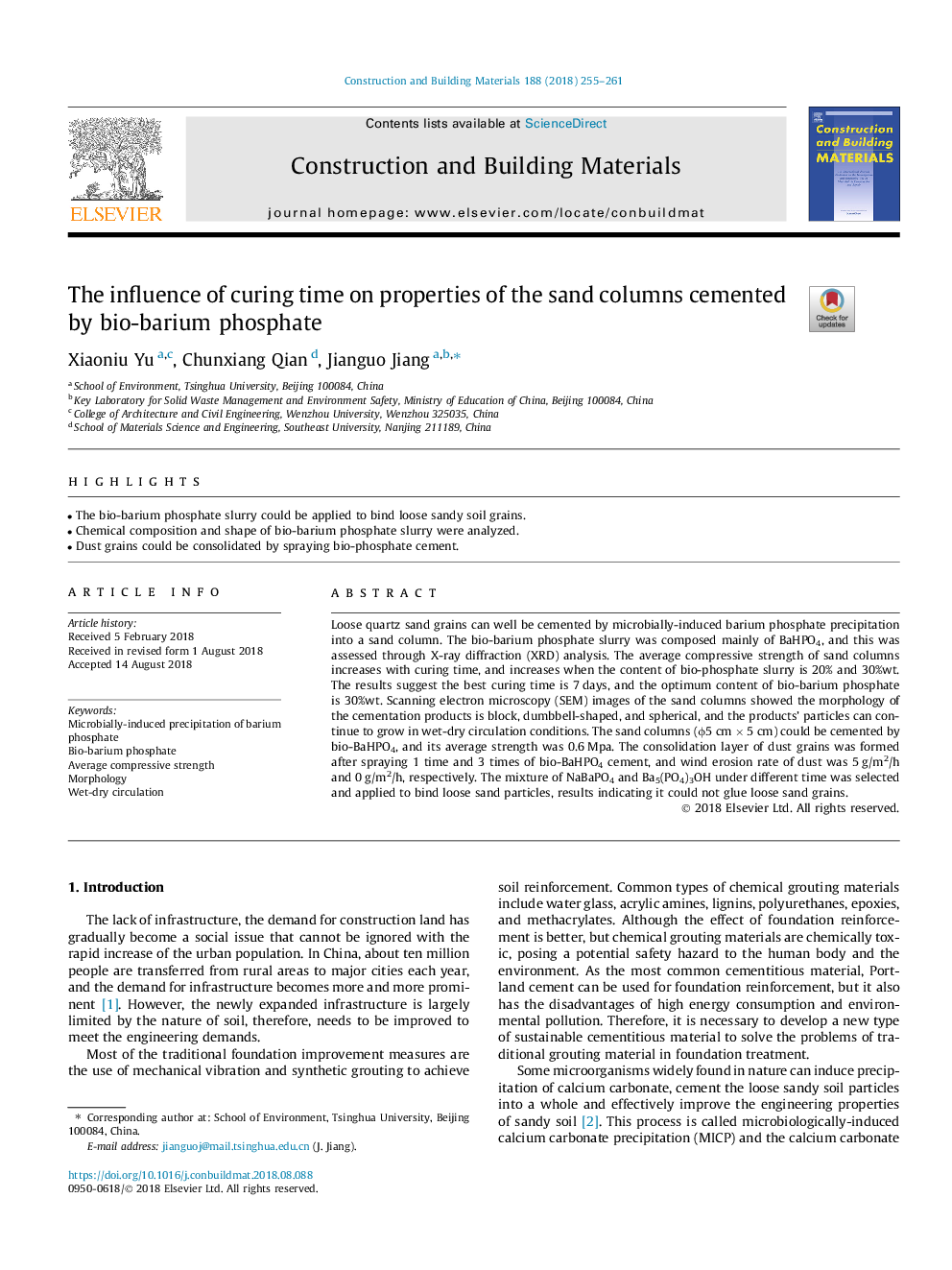| Article ID | Journal | Published Year | Pages | File Type |
|---|---|---|---|---|
| 8947061 | Construction and Building Materials | 2018 | 7 Pages |
Abstract
Loose quartz sand grains can well be cemented by microbially-induced barium phosphate precipitation into a sand column. The bio-barium phosphate slurry was composed mainly of BaHPO4, and this was assessed through X-ray diffraction (XRD) analysis. The average compressive strength of sand columns increases with curing time, and increases when the content of bio-phosphate slurry is 20% and 30%wt. The results suggest the best curing time is 7â¯days, and the optimum content of bio-barium phosphate is 30%wt. Scanning electron microscopy (SEM) images of the sand columns showed the morphology of the cementation products is block, dumbbell-shaped, and spherical, and the products' particles can continue to grow in wet-dry circulation conditions. The sand columns (Ï5â¯cmâ¯Ãâ¯5â¯cm) could be cemented by bio-BaHPO4, and its average strength was 0.6â¯Mpa. The consolidation layer of dust grains was formed after spraying 1 time and 3 times of bio-BaHPO4 cement, and wind erosion rate of dust was 5â¯g/m2/h and 0â¯g/m2/h, respectively. The mixture of NaBaPO4 and Ba5(PO4)3OH under different time was selected and applied to bind loose sand particles, results indicating it could not glue loose sand grains.
Keywords
Related Topics
Physical Sciences and Engineering
Engineering
Civil and Structural Engineering
Authors
Xiaoniu Yu, Chunxiang Qian, Jianguo Jiang,
